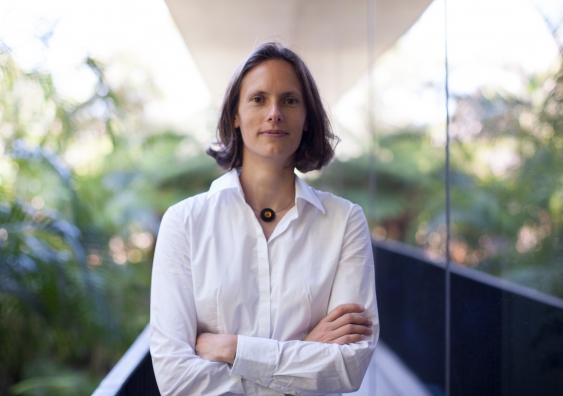Pioneering work earns UNSW researcher Iranian science award
Biomedical researcher Katharina Gaus has been recognised for her pioneering work using super-resolution microscopes to examine how the immune system reacts to disease.
Biomedical researcher Katharina Gaus has been recognised for her pioneering work using super-resolution microscopes to examine how the immune system reacts to disease.

Lucy Carroll
UNSW External Communications
9385 8732, 0402 005 319
l.carroll@unsw.edu.au
Scientia Professor Katharina Gaus from UNSW Medicine has been named a laureate at the Khwarizmi International Award for her work using single-molecule imaging to analyse the complex decision-making process of T-cells.
Professor Gaus is one of five international medical researchers and scientists to receive an award at the 31st KIA Laureate ceremony held last month in Tehran. The awards are given out annually by the Iranian Research Organisation for Science and Technology to recognise outstanding achievement in research, invention and innovation, particularly in the fields of digital and mechanical technologies.
In her study of the body’s T-cells, the “front-line soldiers” of the immune system that switch on to fight disease, Gaus uses super-resolution fluorescence microscopes and analysis to examine why the immune system activates to fight disease or remains dormant and fails to protect the body against infection.
“T-cells tell the immune system to attack germs and other invaders, and every time the cells make a decision the outcome can be life or death,” says Gaus. “We use fluorescence imaging to study these cells and the exact molecular switch that spurs the T-cells into action. If we can figure out how proteins control the T-cells, we can try and figure out what goes wrong in many diseases like immune disorders and cancers.”
The powerful super-resolution microscopes used by Gaus and her team can capture images of objects 10 nanometres in size, allowing researchers to identify the individual parts within functioning T-cells. These findings would not be possible with conventional imaging or biochemical approach, Gaus explains.
Gaus is head of the EMBL Australia Node in Single Molecule Science at UNSW, a department dedicated to cutting edge molecular biology research. She is Deputy Director of the ARC Centre of Excellence in Advanced Molecular Imaging and has been named as one of UNSW’s 15 Women Changing Our World.
“This recognition in the Khwarizmi International Awards is a real honour, and it’s great to see science being recognised beyond borders, cultures and languages,” Gaus says.
Gaus’s team consists of 10 postdoctoral researchers, three independently funded postdoctoral research fellows, six PhD students, and four research assistants. She has also established a state-of-the-art fluorescence microscopy facility, the BioMedical Imaging Facility (BMIF) at UNSW, which has 26 microscopes including four super-resolution microscopes.